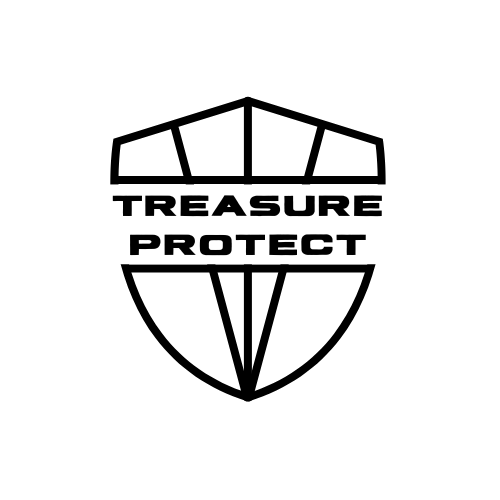Is jewelry insurance expensive?
Generally speaking, the vast majority of jewelry insurers charge an annual premium of 1%-2% of the appraised value of your jewelry, watches or loose gemstones. So if, for example, you have a $10,000 necklace you want covered, you’ll likely pay between $100 to $200 a year in premium, and that necklace is covered less any deductible you may have. It’s important to note, however, jewelry insurance covers the full appraised amount of the jewelry (and sometimes even more), unlike renters or homeowners insurance.
This means if your jewelry is lost or stolen, you can submit a claim to your insurance company, and they will send you a check for the appraised value of the jewelry (less any deductible you may owe). In the event your jewelry is damaged, this coverage also pays for the cost of fixing the jewelry to bring it back to its original condition. It’s important to call out, that in most cases, the insurer will require you to have an appraisal of the jewelry within 2 years of a filed claim. So you definitely want to get an appraisal as early in the process, as possible. You can’t appraise jewelry you don’t have.
Remember that all of this only generally describes most policies. While the macro details may be similar across the board, some of the finer details may differ greatly across companies and policies. Be sure to review all policy documents before you sign or pay for anything.
But now on to the real question…
How much is it?
Generally speaking, the vast majority of jewelry insurers charge an annual premium of 1%-2% of the appraised value of your jewelry, watches or loose gemstones. So if, for example, you have a $10,000 necklace you want covered, you’ll likely pay between $100 to $200 a year in premium, and that necklace is covered less any deductible you may have. It’s important to note, however, jewelry insurance covers the full appraised amount of the jewelry (and sometimes even more), unlike renters or homeowners insurance.
This means if your jewelry is lost or stolen, you can submit a claim to your insurance company, and they will send you a check for the appraised value of the jewelry (less any deductible you may owe). In the event your jewelry is damaged, this coverage also pays for the cost of fixing the jewelry to bring it back to its original condition. It’s important to call out, that in most cases, the insurer will require you to have an appraisal of the jewelry within 2 years of a filed claim. So you definitely want to get an appraisal as early in the process, as possible. You can’t appraise jewelry you don’t have.
Remember that all of this only generally describes most policies. While the macro details may be similar across the board, some of the finer details may differ greatly across companies and policies. Be sure to review all policy documents before you sign or pay for anything.
But now on to the real question…
Is jewelry insurance worth it?
In most cases, yes. Especially if you actually plan to wear your jewelry and you know you want to replace it if it’s lost, stolen or damaged — yes. Just roughly speaking, if you have a $10,000 ring insured @ a premium of 2% of the ring ($200/yr). And even if you have a deductible of say, $500, you would have over 45 years of coverage, where the premiums paid + the deductible owed would still be less than the $10,000 that the insurer would pay you. In other words, you would have money netted back to you, that you hadn’t yet paid to the insurer.

Renters and homeowners insurance DOES NOT cover jewelry in full
Do not rely on your renters or homeowners insurance to cover your jewelry or watches. Here is a brief explanation why:
- Coverage limits for jewelry – most homeowner/renter policies explicitly limit the coverage on jewelry to $1,000 to $2,000. So the most they would ever pay on a claim for jewelry is whatever that maximum amount is in the policy. And even then, it’s only for theft and extremely limited damage related claims.
- Deductible is still in play – even with this stingy coverage limit, you are still beholden to your deductible amount. For example: If you have a $500 deductible, and your $5,000 ring gets stolen, you’ll only receive the max payout on jewelry, LESS your deductible. For example, if your jewelry max coverage limit is $2,000, you will only get $1,500 to help pay for a new ring, since you still have to pony up the $500 in deductible.
- Claims can increase your premium – beyond all these limitations, once you file the claim on your homeowners or renters insurance for the jewelry, there is a chance that the claim will result in higher premiums in the future.
Does self-insuring jewelry make sense?
Self-insuring is definitely an option, and one that oftentimes seems enticing, since you aren’t handing money off to an insurer. This is also doubly beneficial if you never need to file a claim, because you pocket all your accumulated “premiums” you’ve paid yourself. However, if you ever DO need to file a claim, there are a number of years where jewelry insurance is still monetarily superior. Let’s take a look at that example.
First, let’s set up the scenario. You have a $10,000 ring that you want insured. You get a fairly high priced quote of $200/yr (2% of appraised value) AND you have a $500 deductible. You meanwhile, have found this exceptional investment vehicle that somehow miraculously provides 7% returns year-over-year, forever. You decide to self-insure by putting $200 into the investment account every year and letting it grow @ 7%.

So even in this situation, with a high priced policy + a deductible, and investing in a well-producing extremely stable investment vehicle, it would take you 21 years until the self-insuring option is better than getting the jewelry insurance policy. Now, that being said, if you ended up NOT filing a claim, the self-insurance option is the right choice. But that’s the whole point of insurance. You feel that there is a high enough risk, that you pay an insurer to cover that risk.
In summary, jewelry insurance is undoubtedly an very unsexy “thing”. But having it provides peace of mind and financially advantaged protection over many many years.


